 Sjøforsvaret, Torpedo Boats (1896-1900):
Sjøforsvaret, Torpedo Boats (1896-1900):HNoMS Hval, Delfin, Hai, Trods, Storm, Brand, Laks, Sild, Sael, Skrei 1896-1901
This class of ten 1st class (100 tons) Norwegian torpedo boats are often separated in two different sub-classes, Hval, Storm and Laks. They were built over a long period, from 1895 to 1902, from the first laid down to the last commissioned. Most importantly they were in service in WWI and stayed so in the interwar, with the first sub-class Hval being discarded in 1920-1931 and the second sub-classes Storm and Laks still in service in 1940, where they took part in the Norwegian Campaign, trying to resist the might of the Kriegsmarine and Operation Weserübung. One was sunk, two scuttled to avoid captured and one badly damaged beyond repair, while two survived until 1945.
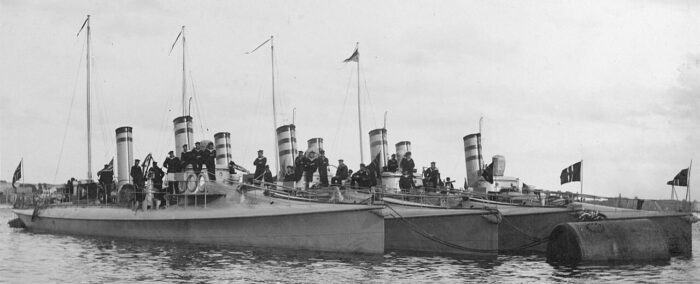
Brand and other TBs at anchor in Kiel, 1900 (Kiel week)
Development
The topic of WW2 Norwegian could merit a whole article, but it would be probably over bloated, so instead, we are going to cover in the future individual classes if enough information is available. When the Norwegian Navy, neutral, had to face the might of the Kriegsmarine in April 1940, it was a mix bag of largely elderly ships, notably with capital ships, the small coastal battleships of the Norge and Haarfarge class being 40+ years old at this point. There were a few gunboats and minelayers, three elderly destroyers so small they were dwarved by WW2 torpedo boats, but a quite imposing fleet (on paper) of torpedo boats: Six Hval class, all 1st class, and six Varg class, 5 Ravn class, 4 Hvas class, all 2nd class torpedo boats, plus the less antiquated 1st class Teist class (3, 1906), Trygg class (1919), plus of course the modern Sleipner and Odin class (1936-39), six combined.
 The Hval (“whale”) class was part of the 1st class torpedo boat, designed in 1894 to bolster the fledging Royal Norwegian Navy and defend its numerous fjords. The particular conditions of the sea and weather in the fjords indeed favoured the use of torpedoes, and they could be small and not particularly seaworthy. They were combined with the coastal defence ships and Norwegian coastal fortifications to defend the approach of major ports, starting with Bergen, Brevik, Kristiansand, Bodo and others. However, for these large torpedo boats, the Norwegian Navy lacked some experience. Until then, all TBs built since 1882 were 41 to 68 tons boats coming from Horten Shipyard.
The Hval (“whale”) class was part of the 1st class torpedo boat, designed in 1894 to bolster the fledging Royal Norwegian Navy and defend its numerous fjords. The particular conditions of the sea and weather in the fjords indeed favoured the use of torpedoes, and they could be small and not particularly seaworthy. They were combined with the coastal defence ships and Norwegian coastal fortifications to defend the approach of major ports, starting with Bergen, Brevik, Kristiansand, Bodo and others. However, for these large torpedo boats, the Norwegian Navy lacked some experience. Until then, all TBs built since 1882 were 41 to 68 tons boats coming from Horten Shipyard.
So the Norwegian Government turned to the great specialist of the type in Northern Europe at the time, Schichau-Werke in Elbing, East Prussia (now Elbag in Poland). They were modelled after the German torpedo boat S67. These designs were very successful at export, and featured the pear-shaped same hull (seen from above) with fine entry lines, fixed forward torpedo tubes and traverse mounts aft, plus a strictly defensive artillery. Thus in 1894, three were ordered to Schichau, to be named Hval (Whale), Delfin (Dolphin) and Hai (Shark). These 102t boats were launched in 1896 and a licence was acquired to create the next derivatives at Horten, the Storm class (1898) and Laks class (1900) of 107t, with the same hull and armament, albeit the Laks were shorter and had a more powerful machinery, all being rated as 21 knots. They formed the 1st line of defence of Norway in WW1 and were still around in 1940, and if the three Hval class were discarded between 1920 and 1931, they were mothballed and still around for modernization, albeit their poor state and lack of time prevented any attempt to put them on back shape.
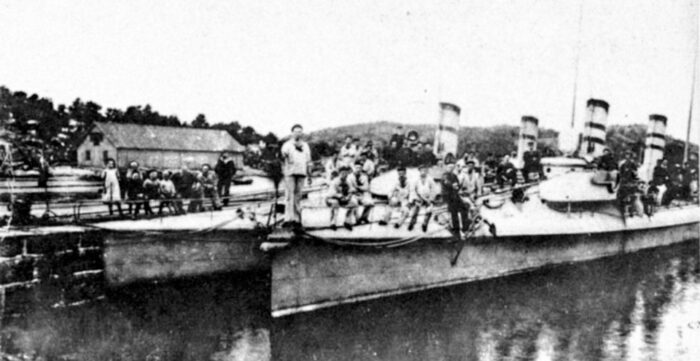
Brand and Storm at Marvika in 1903
Built in 1895-1902, these nine coastal TBs, VTE with coal-burning boilers, all 100t tons, were in part mothballed in the interwar. Hval was stricken in 1931, Delfin in 1927, Hai circa 1933, and the remainder boats (Brand, Storm, Skrei, Sael, Sild and Laks) were in semi-active service in 1939. Hval and Delfin were captured and reused by the Germans despite their poor condition, mothballed for years but not scrapped. Brand was captured at Laksevaag on 11.4.1940 and renamed Tarantel in German service and later NB19 and V5519. She survived and was retroceded in 1945. Sael was attacked and sunk by S-Bootes, Laks captured under repairs but left unrepaired and unused by the German navy.
Design of the class
The 1.-class torpedo boat (a common denomination in Scandinavian navies, also applied to Swedish and Danish classes) were class as ships of more than 80t. The first three were built at Schichau Werke as seen before, and were the prototypes for the whole series of ten ships. Since their design was very similar and due to the lack of more information, the 1898 Storm class will be used as a base. The 1896 Hval class were very similar, they had the same dimensions, 130 feet 11 inches or 39.90 meters, and a machinery producing 1100 hp for 21 knots as contracted at the Royal Norwegian Navy Shipyard at Karljohansvern in Horten.
The Laks class differed by their smaller length at 126 ft 4 inches or 38.50 meters and a slightly more powerful machinery producing 1150 hp, but the same nominal speed. All ten were armed the same way with two 1-pdr light guns and two 12-inches torpedo tubes, one in the bow, one with a traversing mount aft.
Hull and general design
These vessels were a typical Schichau design, but scaled down for Norwegian needs, since again, they were supposed to remain in Fjord, with occasional crossing between Fjords in coastal navigation of the weather allowed it. In 1892, the German S66 standard for example displaced 169 tonnes and measured 47.94 x 5.42 2.74 m (157ft 5in, 17ft 10in, 8ft 11in) with a single shaft TE 1610 ihp and 22 knots. The contemporary S75 series wee even larger at 177t.
These ships measured 39.9 metres (130.91 ft) in overall lenght, 4.9 metres (16.08 ft) in beam for a draught of 2.7 metres (8 ft 10.30 in) and a displacement of 103 tonnes, which became 107 tonnes for the newt two series built at Horten. They had a typical Schichau look, with the pear shaped, low freeboard hull, raised prow, and turtleback. The latter was crucial as in any kind of sea but lake-like conditions, seawater was expected to submerge the hull, and to avoid a loss of balance, quick evacuation was necessary, which precluded the use of a flat deck.
A forward turtleback would ensure rapid evacuation of tons of seawater, avoiding it to “stick” to the deck and cause the ship to plough. The aft part of the deck was still offering the same shape, but lower, with a flat central section and sloped sides and poop. The tall turtle back forward acted almost as a forecastle and encased the small conning tower used by the helmsman, completely enclosed. This was the fruit of Schichau experience between the Baltic and North sea, especially in winter. The pear-shape hull with a much greater beam way aft created enough stability and space for the machinery, while creating fine entry lines optimized for speed. The straight stem was followed by an almost complete absence of flare due to the low freeboard, but the sections still showed a “Vee” shape.
Powerplant
The class was powered by a single propeller shaft, single triple expansion steam engine fed by two cylindrical boilers (Schichau type) for a total output of 1,100 indicated horsepower. This translated into a contracted to speed of 21 knots (38.89 km/h; 24.17 mph).
The 1st class TBs could carry 17 tons of coal, giving them a reasonable range of 900 nautical miles (1,666.80 km; 1,035.70 mi) at 12 knots (22.22 km/h; 13.81 mph), or 500 nautical miles (926.00 km; 575.39 mi) at 16 knots (29.63 km/h; 18.41 mph).
These boats were considered “reasonably” seaworthy, although it was also found to be difficult to accurately fire torpedoes in anything but calm seas, so again, in Fjords. The German-built vessels and followed up class of three Norwegian-built ships of the Storm class were criticized for having poor manoeuvrability.
So the final four of the Laks class had this design issue addressed with a reshaped hull, slightly shorter, a better keel (more draught) and larger rudder. These ships were also criticized to have very poor ventilation especially in the engine compartment, and the engines tended to overheat, and conditions inside, with a lot of heat and moisture, was not appreciated, especially in summer months. The bridge was located in a “turret” or conning tower close to the bow, but in even a moderate sea, with seawater splashes, visibility from was poor from inside. The commander would often remain outside and rely on another crew member to stand at the wheel, follow his directions.
Armament
It was typical of the day, comprising a fixed tube forward, reloadable, and an aft tube on a traversing mount. These boats also had two small 1-pounder defensive guns.
2x 37 mm (1-pdr) QF

By default of more informations on these 37 mm QF guns, a german source precised these were Hotchkiss 5-tubes 1880s models. They worked like a heavy machine gun in the gatling style, partly gas-operated and partly hand cranked plus gravity fed by 37 mm rounds from a side magasine for a continuous fire. They were often protected by light shields.
The gun crew consisted of a gun commander, crank operator at the crank, and loader. The gun commander aimed the gun and could control the discharge by disengaging the hand crank. The gun was pre-loaded with ammunition frames of 10 rounds. Its maximum rate of fire was 60–80 rounds/min.
2x 45 cm TTs
There are conflicting info on these, some sources states both tubes were “on deck” but it seems all concurred the first tube was at the stern, on a traversing mount, and another also on a traversing mount between funnels. It seems there was not embedded fixed prow tube. The torepedo model is unknown, possibly the German Schwarzkopf 45 cm type.
⚙ specifications |
|
| Displacement | 83t light, 107t FL |
| Dimensions | 39.9 x 4.8 x 2.15m |
| Propulsion | 1 shaft VTE 650 PS, 2 boilers |
| Speed | 21 kts max, 17.5 kts normal. |
| Range | 17t, 900 nm |
| Armament | 2x 1-pdr Hotchkiss QF, 2x 45 cm TTs |
| Crew | 23 |
Career of the Storm class
Post-Kalmar Union standoff and WWI
Brand, Delfin and Trods, took part in the 1900 summer fleet exercises, and made a cruise to Kiel in Germany and Marstrand in Sweden as well, escorting and sailing with the coastal defence ships Harald Haarfagre and Tordenskjold, and gunboat Frithjof. The exercises in 1900 focused on combined arms tactics between the coastal defence ships and torpedo boats. Around 10 torpedo boats were fully crewed and equipped for yearly summer exercises until the outbreak of the First World War. They were placed in reserve in the winter and their crews sent back to their civilian lives. Before the First World War borke out, in June and July 1914, the Royal Norwegian Navy pre-mobilized.
The mobilization really was made official on 2 August 1914 and it was completed on 5 August 1914. This concerned the Norwegian torpedo boats, by then scattered along the coast, from the Oslofjord to Trøndelag. Fully crewed and loaded, they were designated their own paorl sectors, in neutrality protection duties. They had many occasions to confront foreign warships approaching Norwegian territorial waters, and deterred possible neutrality violations.
By May 1915 most TBs took part in combined torpedo firing exercises.
Interwar
Postwar, there was a comprehensive inspection of all ships. The 1896 boats of the Hval class were clearly worn out at this point, Royal Norwegian Navy staff observed that all ten boats had collectively suffered much wear and tear during the First World War. They were in incessant patrol, leaving no gap unchecked, and had rare maintenance, not the kind of part-year activity in peacetile, which was far less taxing. The decommissions started in 1920 with Hai, followed by Delfin in 1927, Hval in 1931. They were not the only ones of the 1st class, with Trods also stricken in 1931 and sold for BU while the other three were mothballed. In all, some 14 torpedo boats were stricken, the remainder being 2nd class boats, now completely obsolete after being kept for harbour defence.
Most of the remaining vessels were mothballed, still. With the introduction of the larger and more modern Trygg class in 1919–1921, te remaining 1st class torpedo boats remained inactive in the 1920-30s nine of them being rebuilt as patrol boats. In September 1939, the whole fleet was mobilized and over the course of a few months, the mothballed TBs of the Storm and Laks class were put into shape, despite their age and creal obsolescence, they were organized into one of the five divisions mounted for the defence of Norwegian fjords, and spread along the coastline from the Oslofjord to Trøndelag.
The Norwegian Campaign
In 1939 All the division operated along the coast, all boats patrolled by themselves in formed seas, trying to protect Norwegian shipping (which was huge, Norway had the second largest trade fleet after Britain), guarding against neutrality violations. During the first months, Norwegian neutrality was repeatedly breached by both German and British sides. The most critical even was from the Royal Navy in the February 1940 Altmark Incident. Then came the April invasion and attack on several cities. When Bergen fell on 9 April 1940, the Royal Norwegian Navy in Western Norway reorganized in order to defend surrounding fjords from further German advances. The only TBs of the class to see action were Storm, which torpedoed but missed the E-Boat supply ship Karl Peters in the night of the approach to Bergen on 9 April. The two other torpedo boats that defended Bergen proper, Sæl, also attempted to intercept the German task force but failed to get into a favourable attack position. She was at too close range for a torpedo attack. Brand’s captain decided not to attack tas it was daylight already when he spotted them. He would have been slaughtered.
In Kriegsmarine Service: The Kürassier class
In all, eight of these antiquated torpedo boats were captured. Despite their 40+ years of age, and only capable of 17.5 knots instead of their original 21 knots they had been well maintained, but bore the brunt of very hard service in WW2 and from 1939 to April 1940. Only a few boats took part in the Noerwegian Campaign, only one attacked, two renounced to do so and one was later lost. The others were mostly either laying stricken, mothballed and disarmed, or in repairs and maintenance. Whatever the case, the Germans managed to capture almost the entire 1st class with eight vessels out of ten. These were the ex-Hval (identifier unknown), NK04 Kürassier (ex-Delfin), the ex-Storm, NB19 Tarantel (ex-Brand), Admiral Deinhard (ex-Laks), NM16 Balte (ex-Sild), NH03 (ex-Sael), NH01 (ex-Skrei). Tarantel was probably the best known, in 1942 she was re-identified as V5519 Tarantel and NH01 ex-Skrei the same year became V6501.
They were used as patrollers in the Fjords, rearmed with MG.34 light machine guns and a few depht charges, but details changed among sources. Apart Hval and Storm, never recommissioned, the others were returned to Norway in 1945 and scrapped.
 Hval (1896)
Hval (1896)
She was ordered and built at Schichau (laying date unknown), launched and completed in 1896 (again, dates unknown). Active in WWI but mothballed in the interwar. Of the Schichau boats she was stricken last in 1931 but still existed in 1940. Laid disarmed at Kristiansand when captured. Used by the Germans as Hval.
 Delfin (1896)
Delfin (1896)
She was ordered and built at Schichau (laying date unknown), launched and completed in 1896 (again, dates unknown). Active in WWI but mothballed in the interwar. Of the Schichau boats she was stricken first in 1927 but was mothballed 1940. Laid mothballed and disarmed at Kristiansand when captured. Used by the Germans as Kürassier.
 Hai (1896)
Hai (1896)
Ordered and built at Schichau, launched and completed in 1896. Active in WWI but mothballed in the interwar, stricken in 1920. Possibly scrapped (no records afterwards).
 Trods (1898)
Trods (1898)
Laid down, date unknown at Horten, launched 14.3.1898, completed 1898. Active in WWI. Mothballed in the interwar, stricken 1933, scrapped.
 Storm (1898)
Storm (1898)
Storm (“storm”) was assigned in 1900 under Captain Oppegaard (1900) to the 4th Torpedo Boat Division, 2nd Naval District, based in Naare, Western Norway. From 1917 to 1919 her captain was South Pole explorer First Lieutenant Hjalmar Fredrik Gjertsen. Postwar, she was chosen to remain active until 1939. In 1940, she was in active service under Lieutenant Thorleif Pettersen in the 4th Torpedo Boat Division, 2nd Naval District, with Sæl and Brand. The 4th Torpedo Boat Division operated from September 1939 to the invasion of April 1940.
On 29 September 1939, the Norewegian England-bound Takstaas was stopped by U-7, inspected, evacuated and sunk by torpedoes and shelling. However she carried lumber so after she broke in two, the bow section sank, but the U-Boat could not finish off the stern section, which remained afloat, to be salvaged later. After the attack, the crew reached the Norwegian coast in two lifeboats, spotted by a seaplane of the Royal Norwegian Navy Air Service with HNoMS Storm directed towards them, taking them under tow to Sund, near Bergen.
Wit the invasion of 9 April 1940, Storm was patrolling near Buarøy, off Bergen under command of Lieutenant Thorleif Pettersen. She was the only one present and ready for action as all other sixteen were either in port, in transit or undergoing repairs.
On 9 April she was guarding the approaches to Bergen under orders to fire at any intruder. Reports of unidentified ships approaching pushed Bergen naval commander in Bergen, Rear-Admiral Carsten Tank-Nielsen, to place all his forces (mostly coastal BBs and fortfications) under high alert. Lieutenant Pettersen suggested placing his vessel at the outer line of the restricted area as a vanguard and behind a screen of small patrol boats tasked of identifying incoming ships, reporting them back to the staff. By 22:00 on 8 April, the Kriegsmarine Bergen-bound force was spotted at the Lerøyosen approaches, around 02:00.
They were illuminated by searchlights from Lerøy Fort and 20 min. Later, the back of the column was spotted in turn by Storm, which fired her bow torpedo at the E-boat support ship KMS Carl Peters, from 1,200 metres (3,937.01 ft). The torpedo missed as the targeted ship’s speed was overestimated, it passed just ahead of her bow (as reported by the German Captain, a hit but a dud for the Norwegian’s). Eventually Bergen fell after a short battle with the coastal artillery. E-boats S-21 and S-24 attempted to intercept Storm but she managed to evade them.
Storm became the only Norwegian warship to launch a torpedo in anger during the whole Norwegian Campaign. She later tried another attack further north, but the Germans already departed. She later left the area and headed south to Bømlo, remaininh hidden there for the next three days. On 12 April, she was ordered to redeploy to Uskedal, Hardangerfjord, joining other Norwegian warships to defend the area. On her way in the evening, she struck a skerry at Stangholmene at 20:55 causing a massive leak. She started listing rapidly and her captain turned her around, and beached her stern first at Godøy. At 22:30 on 13 April she capsized and sank but her crew had the time to evacuate and remove arms and ammunition, later joining the forces gathered in Uskedal for further actions. Captain Thorleif Pettersen later fled to Britain and worked with the Norwegian Armed Forces in exile notably in command of the destroyer Arendal. Decades later he was promoted rear admiral.
 Brand (1898)
Brand (1898)
In the summer of 1900 after completion, Brand took part in a large-scale naval exercise with Storm, Delfin and Trods; combined with the HnoMs Harald Haarfagre and Tordenskjold as well as the gunboat Frithjof, on a cruise to Marstrand, Sweden as well as Kiel in Germany. Brand was then under the command of Captain Christian Blom. She took part in the summer training cruises of 1901 and 1905, under command of future explorer Lieutenant Rolf von Krogh.
In July before even the First World War broke the Royal Norwegian Navy and Norwegian coastal fortresses started to mobilize and prepared ways to ensure neutrality patrols, that willtook place untl 1918. Brand patrolled from Bergen in Western Norway. In May 1915, she took part in firing exercises with three other TBs of the class. From 12 December 1918 until the spring of 1919 she was stationed at Ålesund, patrolling now for drifting mines. Her crew deactivated or destroyed 17 naval mines and had to intervene in riots between locals and fishermen, in Fosnavåg. By February 1919 her crew rescued two survivors from the trawler Korsfjord I after she ran aground, loosing 7 crewmen.
Durng the interwar she remained fully crewed and multiplied summer exercises, albeit they grew more severely restricted due to funds lacking, and the naval staff saw them as clearly outdated so they mostly stayed in port to preserve their worn out machinery. 17 TBs were decommissioned from 1920 until 1931, but 23 torpedo boats were retained, albeit never modernized. They still looked useful enough as escorts and coastal guardships.
When the Second World War broke out, she was activated for neutrality patrols, starting in September 1939, but bot the Naval and coastal artillery mibilization was less comprehensive due to a lack of trained crews and officers. Brand was assigned to the 2nd Naval District, 4th TB Division with Sæl and Storm, under overall command of Lieutenant Thorleif Pettersen. Brand was commanded by 2nd Lieutenant Ivar Arne Midtland. She started cycles of Norwegian coast patrol, escorting national and foreign ships, deterring neutrality violators but their long distance and age meant this diminished their overall combat value, and on 1st April 1940, she was based at Fedje until sent to Bergen for a well needed overhaul at the naval base Marineholmen and was inoperable on 9 April. Rear-Admiral Carsten Tank-Nielsen ordered Brand, Sæl and Storm to refuel, resupply and gain action stations in Bergen and joined the defence of Bergen with the destroyer Garm and the submarine B-6.
Reports from Oslofjord came in as she was sailing in the 2nd Naval District at 00:28 on 9 April, and after naval mines were laid off Bergen, torpedo boats deployed to intercept any possible intrusion. At 2:00 Warning shots and live rounds were fired from Lerøy Fort, on the German Gruppe 3 as it closed on Bergen, with Brand ordered to ambush them at Alvøy. She was delayed due to last fixes she needed. She left Marineholmen at 03:30 when the invasion flotilla was now in the inner line of fortifications off Bergen, bing fired at by Kvarven and Hellen. Brand prepared for a torpedo attack from the inlet Gravdalsviken, as substitute for Kvarven’s torpedo battery (inoperable). When the Germans entered Bergen harbour, they passed Brand at just 700-1000 metres (2,296.59/3,280.84 ft) at around 10-12 knots. Chance to make a hit with torpedoes was judged “exceptionally good”, yet Second Lieutenant Midtland did not fired until daylight made the attack impossible. Midtland ordered Brand to port in Laksevåg, left the boat and crew at Marineholmen, later to be interned by the Germans. He was also propose to scuttle his ship but denied it. Remaining crew members left the TB on 11 April and 5 days later, the Germans seized Brand in Laksevåg. She was interned in the Kriegsmarine while the crew was captured and interned at Marineholmen over two months. Brand joined Uller and two guard ships. Later in 1946, Ivar Arne Midtland was investigated by the Commission, was reprimanded for his conduct with the excuse of Brand under German control was sent to the island of Flatøy, near Bergen, a coastal fort and a RN Air Service base. She landed troops to capture the island when a British Blackburn Skua dive bomber attacked her at 07:00. Her boiler room amidships took a direct bomb hit, but this was a dud, still doing massive damage and casualties. The landings was aborted with a motor boat towing Brand to Bergen for repairs. Brand was damaged also in the attack on Bergen from 803 NAS Blackburn Skuas. After repairs in Bergen, Brand resumed service from late April 1940 off Sognefjord, and escorting the minelayers Uller and Tyr, with crew from KMS Bremse. The campaign ended on 2 May and she was renamed “KMS Tarantel” as Vorpostenboot N°19 in the Hafenschutz flotille Bergen, 55th Vorpoosten flotille from December 1940 as V.5519, later receiving an enclosed bridge, two modern MG.34s and six depth charges. She was reclaimed by the Norwegians in 1945, decommissioned and scrapped in 1946.
 Laks (1900)
Laks (1900)
Laid down at Horten, launched 12.7.1900 completed late 1900. Active in the Swedish-Norway standoff after Norway separated from the Kalmar Union. Neutrality patrols in WWI. Active i the interwar, summer exercises and in reserve the rest of the year. Captured on 9.4.1940 in Trondheim by German troops. Rrcommissioned as Admiral Deinhard. Returned to Norway in 1945, BU.
 Sild (1900)
Sild (1900)
Launched at Horten on 30.7.1900, complete late 1900. Same career as Laks, scuttled by her crew on 5 May 1940 at Svane island. Salvaged by the Germans and recommissioned as Balte. Fate unknown.
 Sæl (1901)
Sæl (1901)
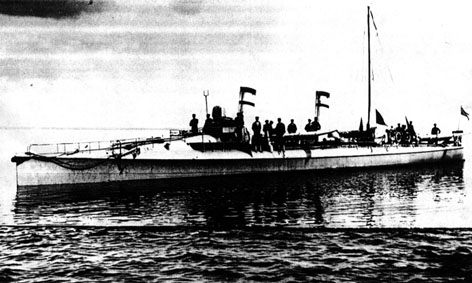
“Sæl” is the pre-1917 Reform Bokmål version of the Norwegian word “sel” or “seal”. Built at the Royal Norwegian Navy Shipyard in Horten, Yard number 85, she was launched on 25 September 1901
and commissioned in 1901n as the penultimate in class. HNoMS Sæl was mobilised already during the intense standoff between Norway and Sweden after the dissolution of the 91-year-old personal union between the two countries in the autumn of 1905. She took part in large exercises to show the flag during the Karlstad negotiations, abated when the independence of Norway was recoignized on 23 October 1905. She had been patrolling the Oslofjord, fearing a Swedish naval attack against Oslo.
With the First World War, Sæl took part in neutrality patrols, escorting merchant ships in Norwegian waters, guarding the coast. In 1918 she took part in a large Norwegian naval manoeuvre watvhing over the International Yacht Racing Union’s 4th annual Europe week sailing regatta (Horten 14-21 July 1914).
She apprehended rum runners as part of the 1919–1926 prohibition and in the autumn of 1924 accompanies the customs patrol boat Bjørnenn catching the smuggler ship Paul Weber off Halten, Sør-Trøndelag. Bjørnen called for assistance from Sæl to capture her, off island of Frøya. The TB opened fire with live rounds, while lighting up the smuggler with searchlights until she surrendered. With the Second World War, the near 40 years old 39-year-old Sæl existed the reserve and was mobilised, joining the 4th Torpedo boat Division, 2nd Naval District with Storm and Brand. She operated from Oslofjord to Trøndelag, south western Vestlandet in coastal guard duties and escorting Norwegian merchant ships leaving Norwegian waters. On 8 April 1940 she was docked at the Marineholmen naval base (Bergen) for maintenance. By 02:30 on 9 April she just took coal, and was ordered to the Lerøy, approaches to Bergen. Unfortunately, lacjing modern communication she stumble upon the German Kampfgruppe 3. Both spotted each others at such close range she had to take evasive manoeuvres and could not launch a torpedo. She could only see the Krigsmarine ships going along just 10–15 metres off her prow. Sæl turned around, gave chase until gaining range for a torpedo run while dawn was soon approaching so captain Fenrik (Ensign) L. Gulbrandsen, decided to disengage and sailed to the Bratholmen islet. He justified his actions as just too dangerous by day.
Bergen fell on 9 April, Sæl sailed to Hardangerfjord, Uskedal (Kvinnherad) on 12 April and on the 17th help with HnMoS Stegg (Trygg class) she captured the 6,567 ton iron ore laden German cargo ship Afrika in Odda harbour. Sæl was then ordered back to Uskedal, joining the Hardangerfjord Naval District with the minelayer Tyr and 5 patrol boats. But on 18 April, HNoMS Stegg left for Langenuen, Austevoll to intercept four merchant ships. Sæl remained when alarm went out in Uskedal. Three German S-Boote had been spotted entering the Hardangerfjord. District commander Orlogskaptein ordered Sæl was to avoid contact, but this order was given orally, and was misundersto. Instead Fenrik Gulbrandsen, believed had had to attack and destroy the three S-boats. At 16:00 Sæl spotted two of these speeding out from the Lukksund Narrows, close to Tysnesøy Island. At 2,500 metres (8,200 ft) Sæl opened fired wit her antiquated bow Hotchkiss gun and for 5 minutes fire was exchanged. But in this, the S-Boote were only armed with a 20 mm AA gun and could not depress it enough. So one was hit by several 37 mm rounds, which did so much damage she was left dead in the water, listing. Sæl’s guns however were eventually knocked out by a German 20 mm shell as the second S-Boote sped away and manage to bear her gun low enough. Soon, Sæl lost both guns and had her bow peppered, her TTs inoperative. The E-boats came in at blank range to finish her off when the third S-boote arrived in turn, and to make sure, three torpedoes were fired. But luch was with the Norwegian crew: Two went under her hull, the third hit a small rock close to her. The explosion however sitll damaged her bow and started flooding. She still placed her 7.92 mm Colt machine gun in battery, and captain Fenrik Gulbrandsen beached his ship to save the crew. However upon arrival she hit an underwater rock and was left grounded, stern up. At 16:25 he ordered to abandon ship., himself wounded by a lung shot and six grazing wounds.
Later on 18 April the crew attempted to moor her, but at high tide, Sælsank in front of Ånuglo. A Norwegian motorboat later evacuated all wounded to the hospital in Rosendal.
The wreck was relocated in 1968 under 25 metres (82 ft) with ammunition, mines and torpedoes still on board. The torpedoes were blown up on site but her remains are still a popular dive site.
 Skrei (1901)
Skrei (1901)
Laid down at MV Horten in 1900, launched on 31.10.1901, completed later in 1901. Same career as above. She was scuttled by her crew in the Frej-fjord at Kristiansand, salvaged by the Germans and recommissioned as NH01. Fate unknown, but returned 1945 and BU.
Read More/Src
Books
Abelsen, Frank (1986). Norwegian naval ships 1939–1945 (in Norwegian and English). Oslo: Sem & Stenersen AS.
Haarr, Geirr H. (2009). The German invasion of Norway – April 1940. Barnsley: Seaforth Publishing.
Hegland, Jon Rustung; Johan Henrik Lilleheim (1998). Norske torpedobåter gjennom 125 år (in Norwegian). Hundvåg: Sjømilitære Samfund ved Norsk Tidsskrift for Sjøvesen.
Melien, Tor Jørgen (1995). Vakt og vern : marinen og kystartilleriet 1914-1918 (in Norwegian). Oslo: Institutt for forsvarsstudier.
Sivertsen, Svein Carl, ed. (2000). Med Kongen til fornyet kamp – Oppbyggingen av Marinen ute under Den andre verdenskrig (in Norwegian).
Sivertsen, Svein Carl, ed. (2001). Sjøforsvaret dag for dag 1814-2000 (in Norwegian). Hundvåg: Sjømilitære Samfund ved Norsk Tidsskrift for Sjøvesen.
Taraldsen, Kristen (1999). Arendals sjømandsforening 1849-1999: 150 år (in Norwegian). Arendal: Arendals sjømandsforening.
Thomassen, Marius (1995). 90 år under rent norsk orlogsflagg (in Norwegian). Bergen: Eide Forlag.
Links
on wlb-stuttgart.de
www.navypedia.org hval.htm
navypedia.org storm.htm
navypedia.org laks
de.wikipedia.org/ Storm_(Schiff,_1900)
en.wikipedia.org 1.-class torpedo boat
web.archive.org hem.fyristorg.com
archive.ph/ worldatwartimeline.com/
web.archive.org hem.fyristorg.com
Videos
None
Model Kits
None
3D
None


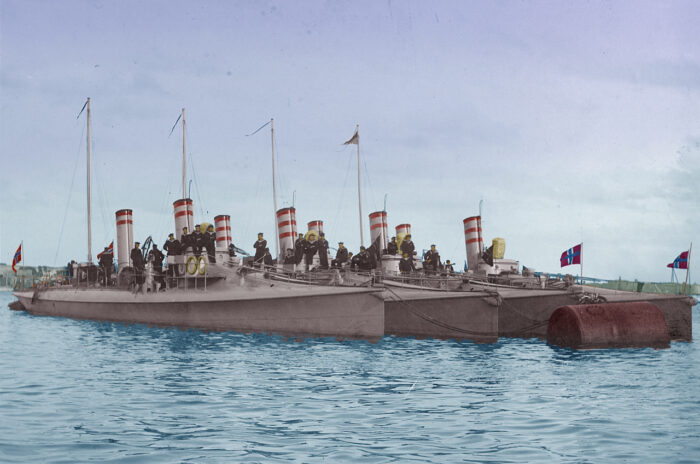
 Latest Facebook Entry -
Latest Facebook Entry -  X(Tweeter) Naval Encyclopedia's deck archive
X(Tweeter) Naval Encyclopedia's deck archive Instagram (@navalencyc)
Instagram (@navalencyc)


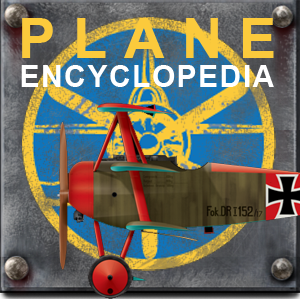
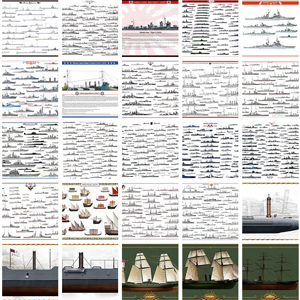

 French Navy
French Navy Royal Navy
Royal Navy Russian Navy
Russian Navy Armada Espanola
Armada Espanola Austrian Navy
Austrian Navy K.u.K. Kriegsmarine
K.u.K. Kriegsmarine Dansk Marine
Dansk Marine Nautiko Hellenon
Nautiko Hellenon Koninklije Marine 1870
Koninklije Marine 1870 Marinha do Brasil
Marinha do Brasil Osmanlı Donanması
Osmanlı Donanması Marina Do Peru
Marina Do Peru Marinha do Portugal
Marinha do Portugal Regia Marina 1870
Regia Marina 1870 Nihhon Kaigun 1870
Nihhon Kaigun 1870 Preußische Marine 1870
Preußische Marine 1870 Russkiy Flot 1870
Russkiy Flot 1870 Svenska marinen
Svenska marinen Søværnet
Søværnet Union Navy
Union Navy Confederate Navy
Confederate Navy Armada de Argentina
Armada de Argentina Imperial Chinese Navy
Imperial Chinese Navy Marinha do Portugal
Marinha do Portugal Mexico
Mexico Kaiserliche Marine
Kaiserliche Marine 1898 US Navy
1898 US Navy Sovietskiy Flot
Sovietskiy Flot Royal Canadian Navy
Royal Canadian Navy Royal Australian Navy
Royal Australian Navy RNZN Fleet
RNZN Fleet Chinese Navy 1937
Chinese Navy 1937 Kriegsmarine
Kriegsmarine Chilean Navy
Chilean Navy Danish Navy
Danish Navy Finnish Navy
Finnish Navy Hellenic Navy
Hellenic Navy Polish Navy
Polish Navy Romanian Navy
Romanian Navy Turkish Navy
Turkish Navy Royal Yugoslav Navy
Royal Yugoslav Navy Royal Thai Navy
Royal Thai Navy Minor Navies
Minor Navies Albania
Albania Austria
Austria Belgium
Belgium Columbia
Columbia Costa Rica
Costa Rica Cuba
Cuba Czechoslovakia
Czechoslovakia Dominican Republic
Dominican Republic Haiti
Haiti Hungary
Hungary Honduras
Honduras Estonia
Estonia Iceland
Iceland Eire
Eire Equador
Equador Iran
Iran Iraq
Iraq Latvia
Latvia Liberia
Liberia Lithuania
Lithuania Mandchukuo
Mandchukuo Morocco
Morocco Nicaragua
Nicaragua Persia
Persia San Salvador
San Salvador Sarawak
Sarawak Uruguay
Uruguay Venezuela
Venezuela Zanzibar
Zanzibar Warsaw Pact Navies
Warsaw Pact Navies Bulgaria
Bulgaria Hungary
Hungary

 Bundesmarine
Bundesmarine Dutch Navy
Dutch Navy Hellenic Navy
Hellenic Navy Marina Militare
Marina Militare Yugoslav Navy
Yugoslav Navy Chinese Navy
Chinese Navy Indian Navy
Indian Navy Indonesian Navy
Indonesian Navy JMSDF
JMSDF North Korean Navy
North Korean Navy Pakistani Navy
Pakistani Navy Philippines Navy
Philippines Navy ROKN
ROKN Rep. of Singapore Navy
Rep. of Singapore Navy Taiwanese Navy
Taiwanese Navy IDF Navy
IDF Navy Saudi Navy
Saudi Navy Royal New Zealand Navy
Royal New Zealand Navy Egyptian Navy
Egyptian Navy South African Navy
South African Navy






























 Ukrainian Navy
Ukrainian Navy dbodesign
dbodesign